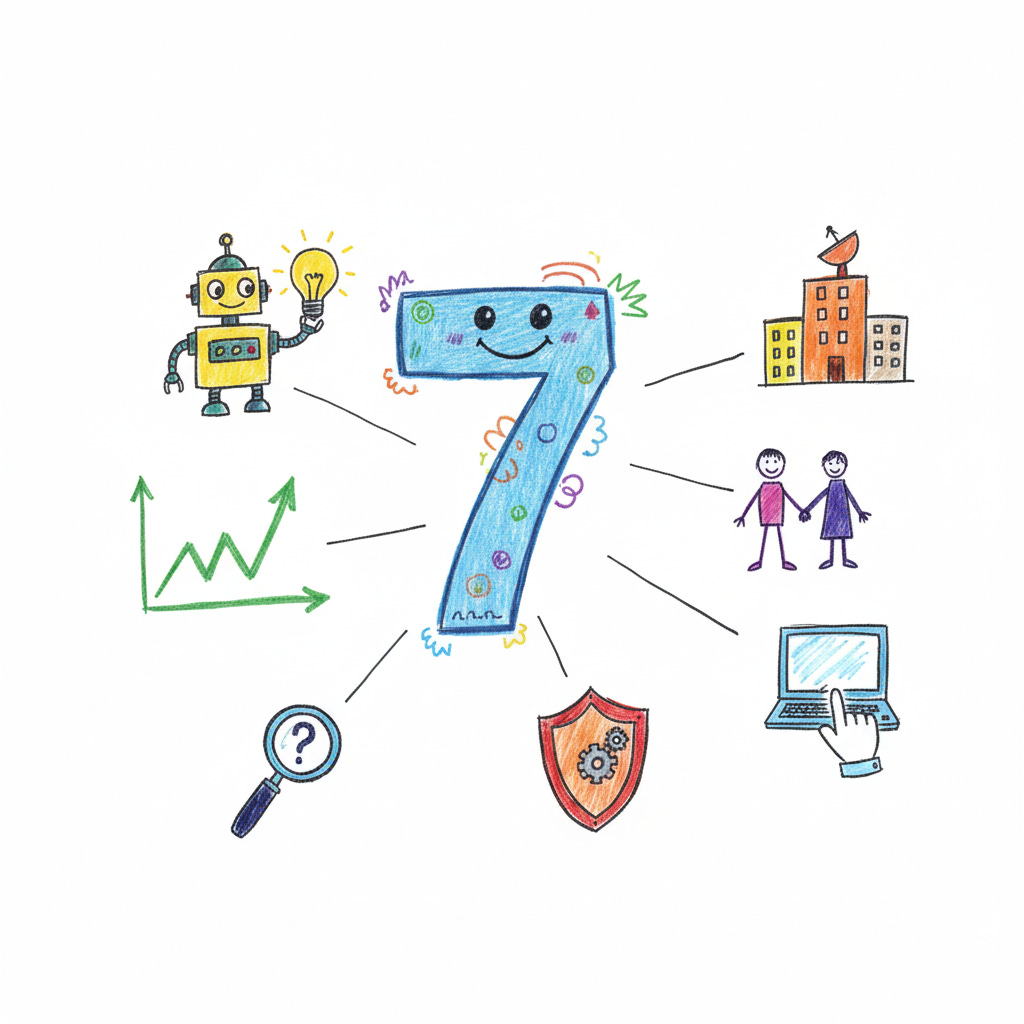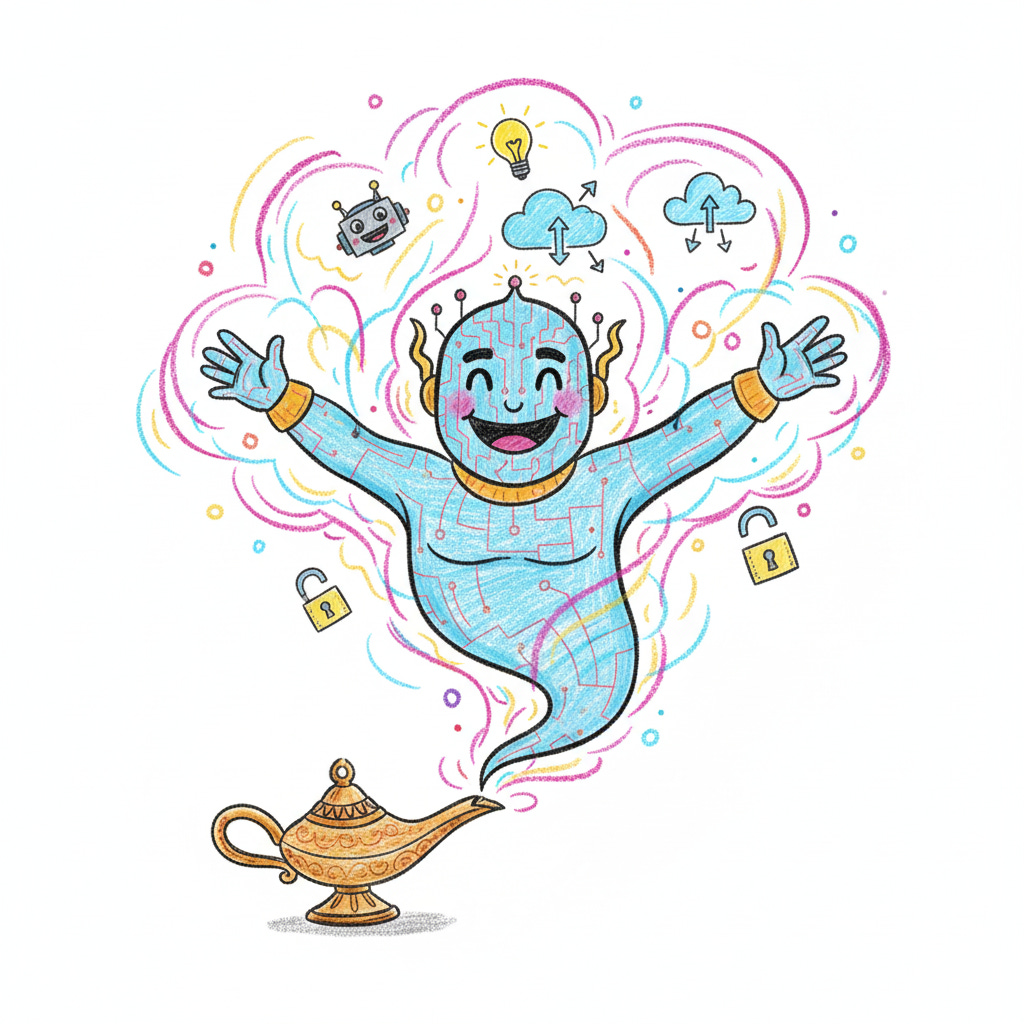1. Coding is not the bottleneck
Nor product inception is the bottleneck.
Nor testing is the bottleneck.
When picturing a function adopting AI tools, we tend to think of using LLMs to automate the one action associated with that function - be it a developer, product manager, or QA. The common, and perhaps intuitive, thought is that because the action is the one thing the function is known for, if we can just offload all the heavy lifting to AI, we would have achieved the goal of revolutionizing the field.
But developers spend less than 25% of their time coding. AI-assisted coding generally provides a 10-30% productivity gain. That is, at best, a 30% gain of 25%. Even if AI can eliminate manual coding completely, it amounts to around 25% gain. More importantly, this 25% is the reason many developers choose this career, myself included. We are intrigued by solving problems, building things, or the act of writing code itself. Eliminating this is to eliminate our job satisfaction - the dystopia we don't want to live in. Replace developer with product manager, replace writing code with writing specs, and we still get the same picture.
The real friction is in the other 75% of the time. In this slice of time, we find ourselves clarifying requirements, providing customer support, digging through legacy code to decrypt logic nobody remembers, or worst, bored to death in meetings. It is these activities where we find the goldilocks: massive productivity gain, improved job satisfaction, and low-hanging fruit. I didn't just add the last part because every great argument needs 3 supporting points. Creating a knowledge base from which feature details can be queried conversationally is a lot easier than getting LLM to generate production-ready code on its own.
2. AI adoption has to be end-to-end or else it is pointless
This draws heavily from the manufacturing chain analogy. In such a chain, we cannot just increase the speed of one part and expect an overall gain from the chain. Such a system moves at the speed of its slowest component. Having just one component moving faster than others actually creates misalignments and can be harmful to the whole system.
Same in a software development process. If code is being written faster than product specs can be written or features can be tested, there could be 2 outcomes: the code sits around generating no revenue while getting obsolete by days as technology moves on; or other functions have to rush and compromise quality.
AI adoption fundamentally rocks the norm of many functions, if not all, but we don't have any option other than to embrace it thoroughly. Product needs AI to help structure requirements. QA needs AI to automate test generation. DevOps needs AI to predict incidents. Customer support needs AI to surface documentation. Every function needs to level up together, or the whole thing falls apart. Half-measures don't just fail to deliver value - they actively create misalignments and chaos.
3. Career development is going from T-shaped to M-shaped
This is not my original idea - the concept is widespread on the internet. The traditional model has been the T-shaped professional: the vertical bar represents depth of related skills and expertise in a single field, whereas the horizontal bar is the ability to collaborate across disciplines. In software development, this meant being, say, a backend engineer who understands enough frontend and DevOps to collaborate effectively.
But LLM doesn't just allow us to do things better. Contrary to the popular belief that AI accelerates brain rot, I find that motivated people learn faster with AI support. The other day, my staff engineer gave Claude Code access to the Postgres source code and proceeded to drill down some very technical questions that otherwise would be impossible for us to have that expertise in a short amount of time. LLM gives us access to the consultancy we didn't have before.
Instead of knowing one thing really deeply (the hallmark of individual contributors in the past), it allows us to know many things deeply, hence the M-shaped analogy (m - lowercase - would have been better, I was clueless what to take of the capital M initially). This shift is profound for career development. The traditional advice of "specialize or generalize" is becoming obsolete. The future of career advancement lies in being able to connect multiple domains of deep expertise.
4. AI adoption leads to change(s) in team structure
There is a discrepancy in AI's impact on productivity between functions. It could be from the nature of work - some functions, like security, are harder to automate than UI test execution. It could be because at that moment, it is where the focus of the industry is, like the investment in application code generation far outweighing infrastructure code generation (which already suffers from a smaller training data set to begin with). And sometimes, we need a strong human-in-the-loop element. Take product managers for example - sure, AI generates product specs really really fast. But disastrous specs will throw a team off its track and cost a company opportunities it cannot get back.
That is to say, right now, it seems to be easier to automate code production compared to other functions. The traditional ratio of 1 PM to 5-8 engineers to 2-3 QAs is becoming obsolete. Where PMs still take two weeks to write specs and QAs cannot click through test cases faster, a productivity gain as small as 30% from developer breaks down the balance.
As such, I think we would see some variations from the current team structure to maintain balance between functions. Primarily, a team can have more product managers, more QA to keep up, or fewer developers. My money is on fewer developers. See the lesson above.
5. Productivity measurement becomes important
Measuring productivity has always been a controversial topic, especially in software development where the delivery is not as tangible as, say, a manufacturing process. Personally, I am not a big fan. It is a hard topic and I don't get much fun out of it. Plus, I have always identified myself as an engineer, the subject of productivity measurement, and I don't like the idea that my contribution to my organization can be boiled down to a set of numbers. If that day comes, by the way, I hope I am a solid 8.
But even with my prejudice, I can't neglect that for a company as small as mine, we might be paying tens of thousands of dollars every month for computer-generated tokens. It is a large sum of capital, capital that can be invested elsewhere. Nobody gets good on the first try - actually most get slower when they try to do something they have done since forever but with new tools. Productivity dip is an important, well-understood and well-accepted part of any learning journey. But said journey can only go so far before the ROI needs to be calculated.
Soon managers will need to choose between a new hire and a new AI tool. The math isn't straightforward. A new engineer costs $X annually but brings human judgment and creativity. An AI tool might cost $Y in tokens but needs constant supervision. Which delivers more value? Without proper productivity metrics, we're making these decisions blind.
I hope by then, we have known about productivity enough to make a well-informed decision, not some dogmatic principles (neither human is unique, nor machine is faultless). Cynical as I am, I also know that it is wishful thinking - we'll probably still be arguing about story points while the AI quietly rewrites our entire codebase.
6. Bottom-up innovation triumphs over top-down dictation
A recent MIT report found that 95% of generative AI pilots at companies are failing. A pattern emerges from the report: top-down "enterprise" pilots mostly go nowhere, while bottom-up adoption is what actually drives disruption.
The problem with top-down initiatives is that upper management usually works completely differently from the majority of the workforce - the frontline workers - in terms of requirements and daily tasks. They end up building things that nobody needs, optimizing activities with marginal ROI, and eliminating work people love (see lesson 1). Meanwhile, individual employees are finding real value by experimenting with frontier models on their own terms, for their specific needs.
The 5% that succeed? Those are likely the ones where companies recognized this organic usage, which the report calls "the future of enterprise AI adoption", and supported it rather than fighting it. Bottom-up innovation triumphs over top-down dictation. The reward is for those who can get their hands dirty.
7. AI adoption is irreversible despite reality checks
Despite occasional setbacks, AI adoption in the industry is irreversible. Just like once color TV was a thing, nobody wanted black and white. I am not giving up my agents. Yes, they will replace me some days, but today they contribute to parts of my job satisfaction.
It only makes sense that AI skills - the correct way of using AI be it technical, intellectual, or ethical - need to be learned and tested. This is already happening. Meta is letting job candidates use AI during coding tests. They're acknowledging that AI is now part of the toolkit, just like IDEs and Stack Overflow before it. Testing someone's coding ability without AI is like testing their math skills without a calculator - technically possible but practically irrelevant.
I have learned the hard way that I should never just ask if someone "uses AI." The answer is not binary, yes or no. Everyone says yes these days. But only upon close inspection, the answer reveals itself to be a spectrum. It goes from "I ask AI questions so I don't have to Google myself" to "AI is my copilot" to "I have delegated all thinking to AI." The difference between these levels is massive - it's the difference between using a tool and being used by it.
Soon, we will see the AI-focused version of today's LeetCode. Instead of testing a red-black tree from memory (what is it by the way?), we will be tested on whether we can architect a system with AI assistance, validate AI-generated code for subtle bugs, or construct prompts that consistently produce production-ready outputs. The skill isn't memorizing algorithms anymore - it's orchestrating AI to solve real problems while maintaining quality and understanding.
I think this is when people say the AI genie is out of the bottle.



